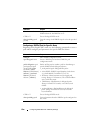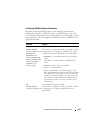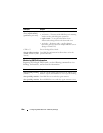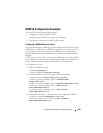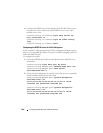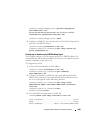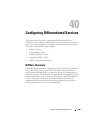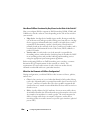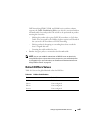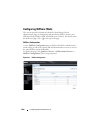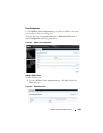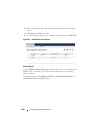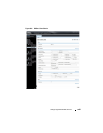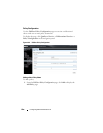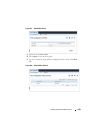
1286 Configuring Differentiated Services
How Does DiffServ Functionality Vary Based on the Role of the Switch?
How you configure DiffServ support in Dell Networking N2000, N3000, and
N4000 series switches software varies depending on the role of the switch in
your network:
•
Edge device
: An edge device handles ingress traffic, flowing towards the
core of the network, and egress traffic, flowing away from the core. An edge
device segregates inbound traffic into a small set of traffic classes, and is
responsible for determining a packet’s classification. Classification is
primarily based on the contents of the Layer 3 and Layer 4 headers, and is
recorded in the Differentiated Services Code Point (DSCP) added to a
packet’s IP header.
•
Interior node
: A switch in the core of the network is responsible for
forwarding packets, rather than for classifying them. It decodes the DSCP
in an incoming packet, and provides buffering and forwarding services
using the appropriate queue management algorithms.
Before configuring DiffServ on Dell Networking series switches, you must
determine the QoS requirements for the network as a whole. The
requirements are expressed in terms of rules, which are used to classify
inbound or outbound traffic on a particular interface.
What Are the Elements of DiffServ Configuration?
During configuration, you define DiffServ rules in terms of classes, policies,
and services:
•
Class
: A class consists of a set of rules that identify which packets belong
to the class. Inbound traffic is separated into traffic classes based on Layer
2, Layer 3, and Layer 4 header data. The class type
All
is supported; this
specifies that every match criterion defined for the class must be true for a
match to occur.
•
Policy
: A policy defines the QoS attributes for one or more traffic classes.
An attribute identifies the action taken when a packet matches a class rule.
An example of an attribute is to mark a packet. The switch supports the
ability to assign traffic classes to output CoS queues, and to mirror
incoming packets in a traffic stream to a specific egress interface (physical
port or LAG).



